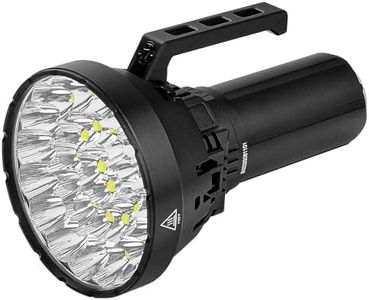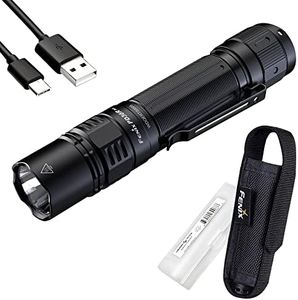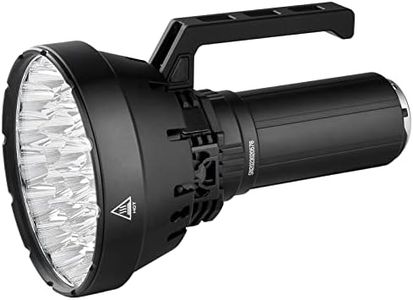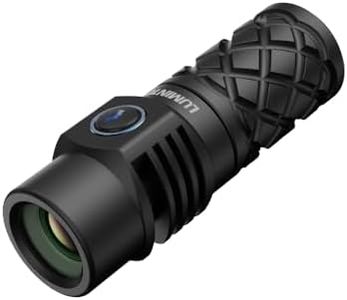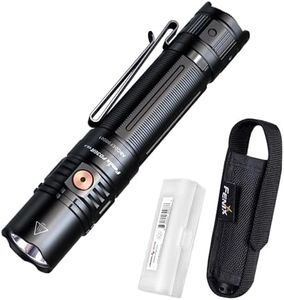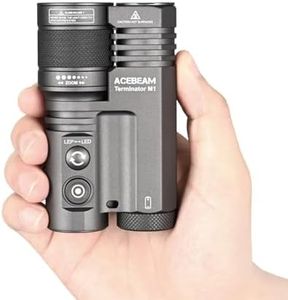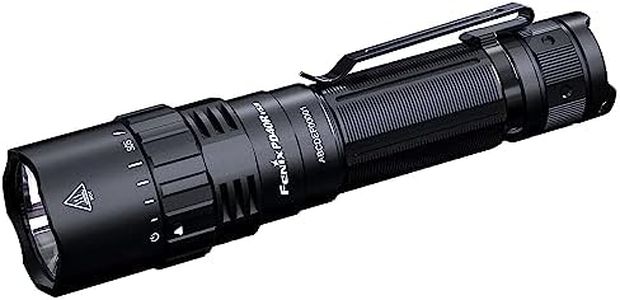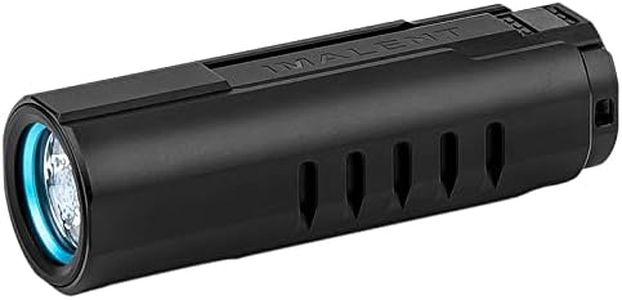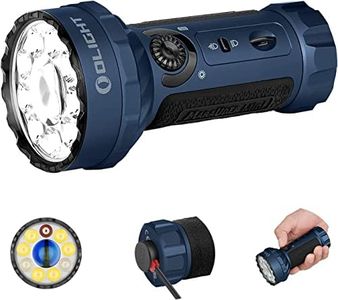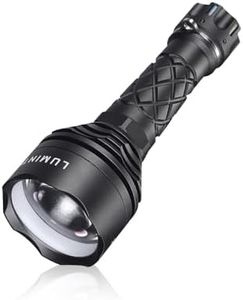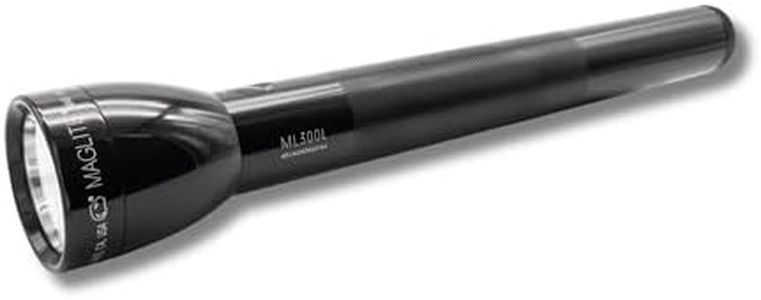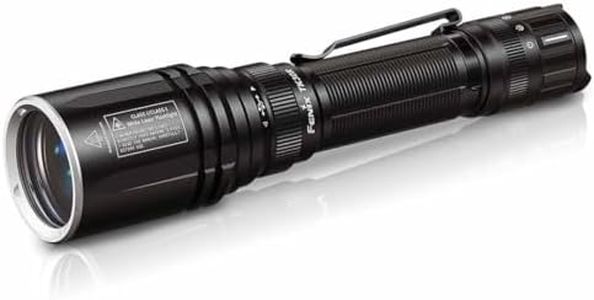We Use CookiesWe use cookies to enhance the security, performance,
functionality and for analytical and promotional activities. By continuing to browse this site you
are agreeing to our privacy policy
10 Best Lep Flashlight
From leading brands and best sellers available on the web.Buying Guide for the Best Lep Flashlight
Choosing an LEP (Laser Excited Phosphor) flashlight can feel overwhelming because this is a specialized category designed for those who need a super-focused, long-reaching beam of light. These types of flashlights are not for general household or casual use, but for situations where throwing a narrow, intense beam across very long distances is important—like for search and rescue, hunting, or professional tactical use. To get the best fit, you should focus on understanding what makes an LEP flashlight different from regular LED models and think about where, when, and how you'll be using it.Beam DistanceBeam distance tells you how far the flashlight's beam can reach before it dims too much to be useful. LEP flashlights are praised for their ability to throw a concentrated spot of light much farther than LED or traditional flashlights. On the lower end, some models can reach a few hundred meters, while the top-tier ones may hit over a kilometer. If your activities involve spotting targets at very long ranges—like search and rescue or outdoor adventures in large open areas—go for longer beam distances. If you're using your flashlight in closer environments, such power may be unnecessary and even a hindrance.
Lumens OutputLumens measure the total amount of visible light a flashlight emits. LEP flashlights typically have lower lumen counts compared to high-output LEDs, but the light is much more focused. For LEP, a lower lumen number doesn’t mean poor performance—it just means the light is tightly directed. If you need to see very far rather than light up a wide area, a lower lumen, highly focused beam is actually preferred. Consider what matters to you—distance or area coverage.
Beam Shape (Spot vs. Flood)The beam shape is crucial with LEP flashlights because they are almost always designed for a tight, focused spot beam rather than a flood. This means the light will be a narrow 'laser-like' dot with very little peripheral illumination. If you need to light up a whole room or trail, an LEP is not ideal. But if your need is for long-distance pointing or targeting—like finding something or someone far away—a tight spot is best. Pick based on whether you value distance pinpointing or area illumination.
Battery Type and RuntimeThe battery type determines both how portable your flashlight is and how long it can run between charges or replacements. LEPs can draw a lot of energy, so most use larger, rechargeable batteries like 18650, 21700, or even proprietary packs. If you have easy access to charging or replacement batteries, a higher capacity option will offer more runtime. If your plans require long sessions away from power sources, prioritize models with longer runtimes and accessible batteries.
Build Quality and Water ResistanceSince LEP flashlights are often used in demanding outdoor or tactical environments, build quality matters. A sturdy, metal body and sealed construction mean better survival if dropped or exposed to harsh elements. Water resistance is often rated as IPX6, IPX7, or higher. If you expect rough handling or wet conditions, check for higher ratings. If your flashlight will mostly stay in dry, controlled environments, this feature may be less crucial.
Safety and RegulationsLEP flashlights use powerful lasers that can cause eye injury if misused. Some regions have restrictions on import or use of certain types of laser-powered devices. Make sure to check your local rules and always or choose models with safety features like lockout modes or covered switches if you're concerned about accidental activation. If you have children or will be carrying the flashlight in a crowded place, safety features should be a top priority.
